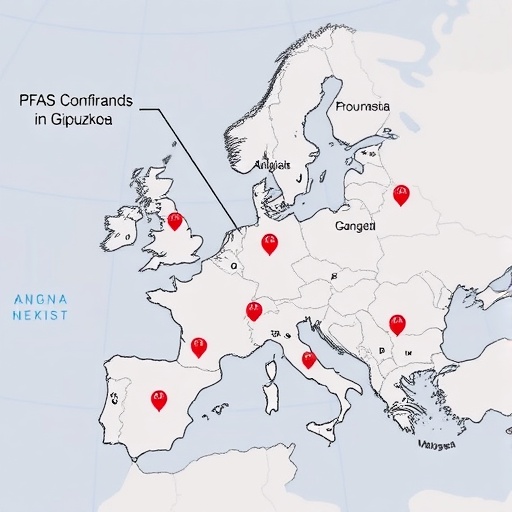Researchers have identified a new gene-activation pathway caused by lipids associated with coronary artery disease, a finding that could help identify new directions in research and drug development. The study was published in June in Nature Communications.
The discovery that exposure to lipids activates a gene called MTHFD2 in the walls of blood vessels was made by researchers from the Institute for Cardiovascular Physiology of Goethe University in Frankfurt, Germany, and the Department of Genetics and Genomic Sciences of the Icahn School of Medicine at Mount Sinai in New York. The researchers used a computational model of the cells lining blood vessels in the human heart developed at Mount Sinai.
Atherosclerosis is caused by the buildup of a complex mixture of components, commonly referred to as plaque, within the inner lining of arteries. Oxidized phospholipids are abundant in this arterial plaque and are thought to promote atherosclerosis progression. However, the specific cellular processes caused by these lipids on the arterial surface are still not well understood. The cells composing the inner surface of blood vessels, called endothelial cells, are at the forefront of the atherosclerotic process and therefore are a major focus of research into coronary artery disease.
"Endothelial cell response to lipids has been studied extensively over the years, but it was still unknown that MTHFD2 was even functional in these cells," said Jun Zhu, PhD, Professor of Genetics and Genomic Sciences at the Icahn School of Medicine; Head of Data Science at Sema4, a patient-centered predictive health company that is a Mount Sinai venture; and co-senior author of the study. "Computational biological models such as the one we used in this study are allowing us to uncover a wealth of knowledge about complex diseases that we never could before."
The international research team predicted and validated in follow-up experiments that the MTHFD2 gene plays a key role in endothelial cell response to oxidized phospholipids. They found that MTHFD2 was also activated in endothelial cells in response to other factors, such as inflammation or a change in amino acid concentration. This underscores the many factors involved in the development of atherosclerosis that must be understood and taken into consideration when approaching disease therapies.
"Our study showed that when the MTHFD2 gene is activated in endothelial cells in response to oxidized lipids, it sends out molecular 'danger signals' promoting inflammation and stimulating the atherosclerotic process," said Ralf Brandes, MD, Director of the Institute for Cardiovascular Physiology and Professor of Physiology at Goethe University. "These findings suggest that MTHFD2 could be a novel target to disrupt development and progression of atherosclerosis."
While the role of MTHFD2 in the vascular system was unknown before this study, the gene is known to be consistently activated in cancer, making it a promising target for cancer therapies. MTHFD2 inhibitors are already in clinical trials as anti-cancer therapies. "It's possible that these therapies could also help prevent coronary artery disease, but more research into the specific role of MTHFD2 in atherosclerosis is needed first before proposing it as a target for potential therapy," said Dr. Zhu.
###
About the Mount Sinai Health System
The Mount Sinai Health System is New York City's largest integrated delivery system encompassing seven hospital campuses, a leading medical school, and a vast network of ambulatory practices throughout the greater New York region. Mount Sinai's vision is to produce the safest care, the highest quality, the highest satisfaction, the best access and the best value of any health system in the nation. The System includes approximately 7,100 primary and specialty care physicians; 10 joint-venture ambulatory surgery centers; more than 140 ambulatory practices throughout the five boroughs of New York City, Westchester, Long Island, and Florida; and 31 affiliated community health centers. The Icahn School of Medicine is one of 3 medical schools that have earned distinction by multiple indicators: ranked in the top 20 by U.S. News & World Report's "Best Medical Schools", aligned with a U.S. News & World Report's "Honor Roll" Hospital, No. 13 in the nation for National Institutes of Health funding, and among the top 10 most innovative research institutions as ranked by the journal Nature in its Nature Innovation Index. This reflects a special level of excellence in education, clinical practice, and research. The Mount Sinai Hospital is ranked No. 18 on U.S. News & World Report's "Honor Roll" of top U.S. hospitals; it is one of the nation's top 20 hospitals in Cardiology/Heart Surgery, Diabetes/Endocrinology, Gastroenterology/GI Surgery, Geriatrics, Nephrology, and Neurology/Neurosurgery, and in the top 50 in four other specialties in the 2017-2018 "Best Hospitals" issue. Mount Sinai's Kravis Children's Hospital also is ranked in six out of ten pediatric specialties by U.S. News & World Report. The New York Eye and Ear Infirmary of Mount Sinai is ranked 12th nationally for Ophthalmology and 50th for Ear, Nose, and Throat, while Mount Sinai Beth Israel, Mount Sinai St. Luke's and Mount Sinai West are ranked regionally. For more information, visit http://www.mountsinai.org/, or find Mount Sinai on Facebook, Twitter and YouTube.
Media Contact
Jennifer Gutierrez
[email protected]
@mountsinainyc
http://www.mountsinai.org
https://www.mountsinai.org/about/newsroom/2018/computational-models-provide-novel-genetic-insights-into-atherosclerosis
Related Journal Article
http://dx.doi.org/10.1038/s41467-018-04602-0




